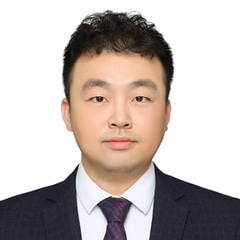Active Colloidal and Micro Systems for Propulsion and Manipulation
A special issue of Micromachines (ISSN 2072-666X). This special issue belongs to the section "E:Engineering and Technology".
Deadline for manuscript submissions: 31 May 2024 | Viewed by 5912
Special Issue Editors
Interests: dielectrophoresis; microfluidics and nanofluidics; Lab on a chip; microplastics; soft materials and interfaces; biosensor; particle manipulation and separation; biological cell characterization
Interests: microfluidics; micro-/nanofabrication; smart materials; surface modification; biomimetic sensors and systems
Special Issues, Collections and Topics in MDPI journals
Special Issue Information
Dear Colleagues,
Colloidal suspensions are heterogeneous fluids containing solid microscopic particles. They play a crucial role in our everyday life, from the food and pharmaceutical industries to medicine and nanotechnology. The colloidal suspensions include two major classes: equilibrium and active, i.e., maintained out of thermodynamic equilibrium by external electric or magnetic fields, light, chemical reactions, or hydrodynamic shear flow. Due to the remarkable properties of converting available energy sources into directed propulsion and the capability of dynamic self-assembly into complex functional geometry, active colloidal suspensions are fabricated for the application of tunable self-assembled micro-swimmers and micro-robots. To precisely control and manipulate these micro/nanoscale targets and objects, the microsystem, including microfluidic and nanofluidic platforms, provides a powerful and promising technique for their potential in the fields of chemical, biological, and environmental science. Accordingly, this Special Issue seeks to showcase research papers, communications, and review articles that focus on novel methodological developments for the generation, fabrication, and utilization of active colloidal suspensions in a variety formats, with particular interest being paid to techniques for self-propulsion micro-swimmers and micro-robots as well as the manipulation, separation, characterization, and identification of micro/nanoscale particles and targets in micron systems.
Dr. Kai Zhao
Dr. Kaihuan Zhang
Guest Editors
Manuscript Submission Information
Manuscripts should be submitted online at www.mdpi.com by registering and logging in to this website. Once you are registered, click here to go to the submission form. Manuscripts can be submitted until the deadline. All submissions that pass pre-check are peer-reviewed. Accepted papers will be published continuously in the journal (as soon as accepted) and will be listed together on the special issue website. Research articles, review articles as well as short communications are invited. For planned papers, a title and short abstract (about 100 words) can be sent to the Editorial Office for announcement on this website.
Submitted manuscripts should not have been published previously, nor be under consideration for publication elsewhere (except conference proceedings papers). All manuscripts are thoroughly refereed through a single-blind peer-review process. A guide for authors and other relevant information for submission of manuscripts is available on the Instructions for Authors page. Micromachines is an international peer-reviewed open access monthly journal published by MDPI.
Please visit the Instructions for Authors page before submitting a manuscript. The Article Processing Charge (APC) for publication in this open access journal is 2600 CHF (Swiss Francs). Submitted papers should be well formatted and use good English. Authors may use MDPI's English editing service prior to publication or during author revisions.
Keywords
- active colloidal
- stimuli-responsive materials
- micro-swimmers
- manipulation and separation
- dielectrophoresis
- microfluidics
- micro-/nanofabrication
- micro systems







